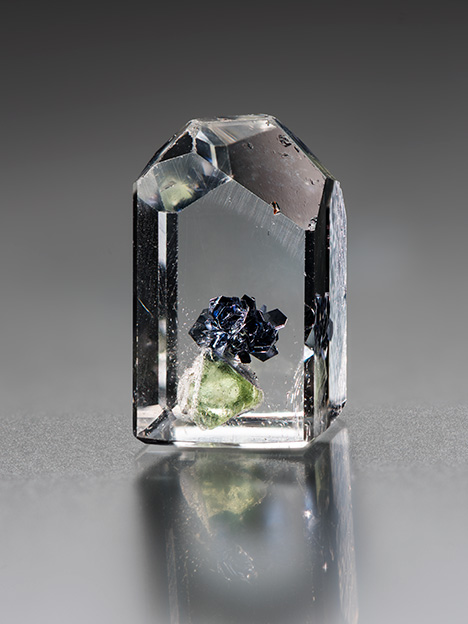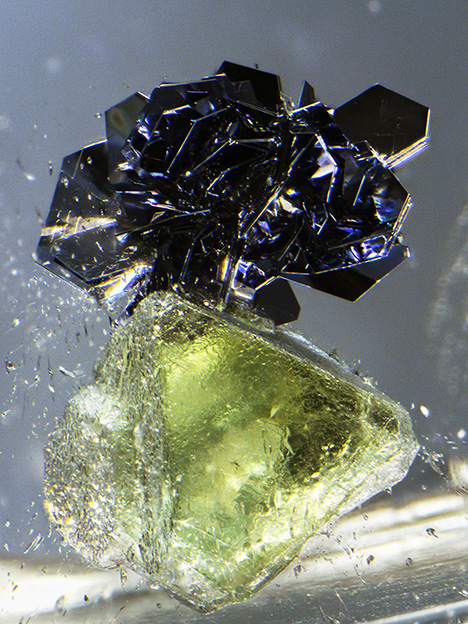Quarterly Crystal:
Mystery in Topaz

Occasionally we run into an inclusion identification problem we just can’t solve. Such was the case with the 5.10 ct topaz from Elahera, Sri Lanka, shown in figure 1. This transparent colorless crystal, acquired from Kusum S. Naotunne (Colombo, Sri Lanka), hosts a prominent translucent light green crystal and a flowery cluster of hexagonal opaque silvery black plates (figure 2). The bodycolor and characteristic form of the green inclusion suggest fluorite; this was confirmed by laser Raman micro-spectrometry.

Analysis of the opaque black plates was a more difficult matter. GIA’s Carlsbad lab staff employed Raman to identify the plates, but the inclusion was too deep to get any signal other than the spectral lines of the topaz host. Energy-dispersive X-ray fluorescence (EDXRF) was attempted to pick up any hints of the plates’ chemical composition, but useful information continued to elude such efforts. It became clear that destructive analysis would be needed to clearly identify the black plates. Since this was an inclusion combination, we decided that this topaz should be preserved unaltered for future exploration. Surely one day technological advances will allow the identification of this mystery inclusion, but for now it is enough to enjoy the aesthetics of such a beautiful included crystal and the fascinating exploration of its inner world.



